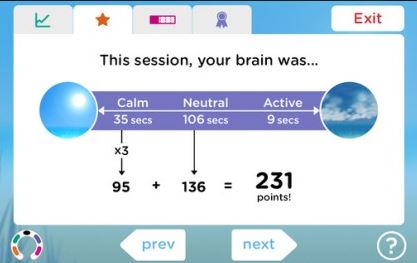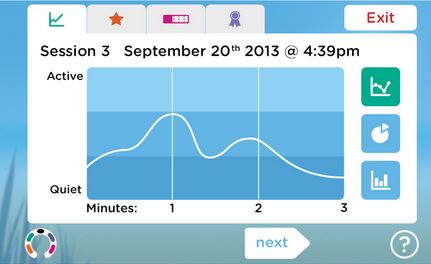Can Brain Sensing Devices Really Help you Meditate?
There must be an app for that!

Zenpra 2nd February 2015 0 Comments
Meditation meets technology
Have you ever wondered what is happening to your brain while you meditate? Brain sensing technology has become relatively cheap allowing regular people to dive into their brain data. This has allowed people to create apps that can actually tell you if you are in a focused and meditative state by analyzing your brain waves.
There are a few brain sensing technologies available such as the Muse
There has been a recent surge in devices that measure bio data. For example your Fitbit
How does it work?
Muse is a headband and measures the electrical activity of the brain by passive sensors. It then takes the EEG data and interprets if you are in a calm or active state. It looks at the pattern of your brain signals and sees if there is any change in alpha, beta, gamma, or theta waves. Alpha waves are emitted when you are in a relaxed state while beta waves are emitted during active thinking and problem solving. You can read more about brain waves here.
Your brain emits detectable electrical signals based on neural activity. It takes the sum of the neural activity which could be 50,000 neurons! When neurons fire in a coordinated pattern they emit voltage fluctuations at different frequencies. Such states include Alpha Beta and Theta waves. Your brain has overlapping states which can then be measured and interpreted using a brain sensing device. You can see why it takes sophisticated sensors and algorithms to make this possible.
Meditate with real time feedback

Muse pairs with an App called Calm. This app gets the raw EEG data from the headset and can tell you your brain state in real time. So if you lose focus during meditation it can alert you. It is like having a meditation coach right by your side.
The calm app has exercises that guide you to become more focused. For example, there is an exercise that helps you focus on your breath. As you do the exercises you hear pleasant sounds such as chimes and ocean waves. The cool thing of the app is that when your brain activity becomes less focused the sound actually changes to be more hectic. If the sounds are peaceful then your mind is calm and focused. If the sounds are louder than normal that means your mind is distracted. The changing music gives you feedback on how well you are focused. You will be able to train yourself to meditate by trying to keep the music pleasant.
It can help you with meditations where you want to be focused. However, it does not help with body scanning or other forms of meditations where you have to actively think or visualize. The app will interpret this type of thinking as activity and will say that you are not in a focused state. Maybe one day they could make the technology better.
The Calm app allows you to see in real time the changes in your brain state. The screenshot shows different brain states right on your phone!
How can it help you meditate?

Wouldn’t it be great to know what a meditative state actually feels like? People constantly ask how they can know if they are meditating right. For some it is discouraging not being able to see immediate results and knowing if they are on the right track. With this device you are able to see how well you are focused and it gives you something to work towards and improve. After some practice you will be able to distinguish what a relaxed and meditative state feels like. We cannot grow in life if we do not get feedback on how we are doing. The brain sensing technologies allow for you to get real-time feedback on what your current brain state is. You really don’t know how often your mind wanders until you have something like this to tell you.
This technology can help you reach a meditative state much quicker by telling you when you reached a calm state. This allows you to find out what technique works best for you to reach that state easily. So after weeks of use you might notice that it is easier for you to reach a meditative state. This helps you train yourself to reduce stress and stay calm even when you are not using the headset.
You can also make meditation into a game! Now this might not be for everyone but it can help people get started with meditation. Imagine if you can see how much you score during your meditation session just as if you were playing a video game. The Calm app keeps score of your session by seeing how long you are in a calm state. It helps motivate people to continue their meditation practice and improve their results. You can also challenge your friends!
The key is to find what works for you. There isn’t going to be one type of meditation technique that is right for everyone. If you think like this is cool technology and you can’t wait to gamify your meditation check out Muse
What can you imagine for the future?
What are the possibilities with this new technology? I could imagine it being used while studying or during surgery where extreme focus and attention is needed. There are also other uses for the muse such as controlling a toy car with your mind and creating music from your thoughts.
I feel this is just the beginning of utilizing technology to explore deeper into ourselves. We have explored different planets and the depths of the ocean, but we have not taken the time to understand what is in-between our heads. The best part is that you do not need fancy technology, you can start exploring right now by meditating.
